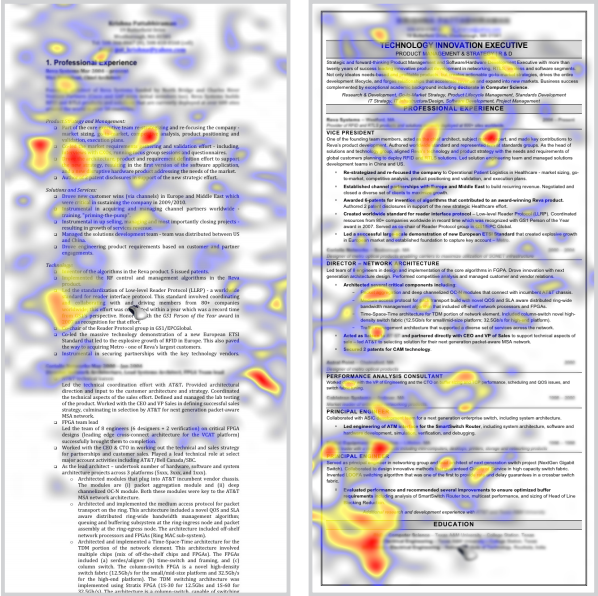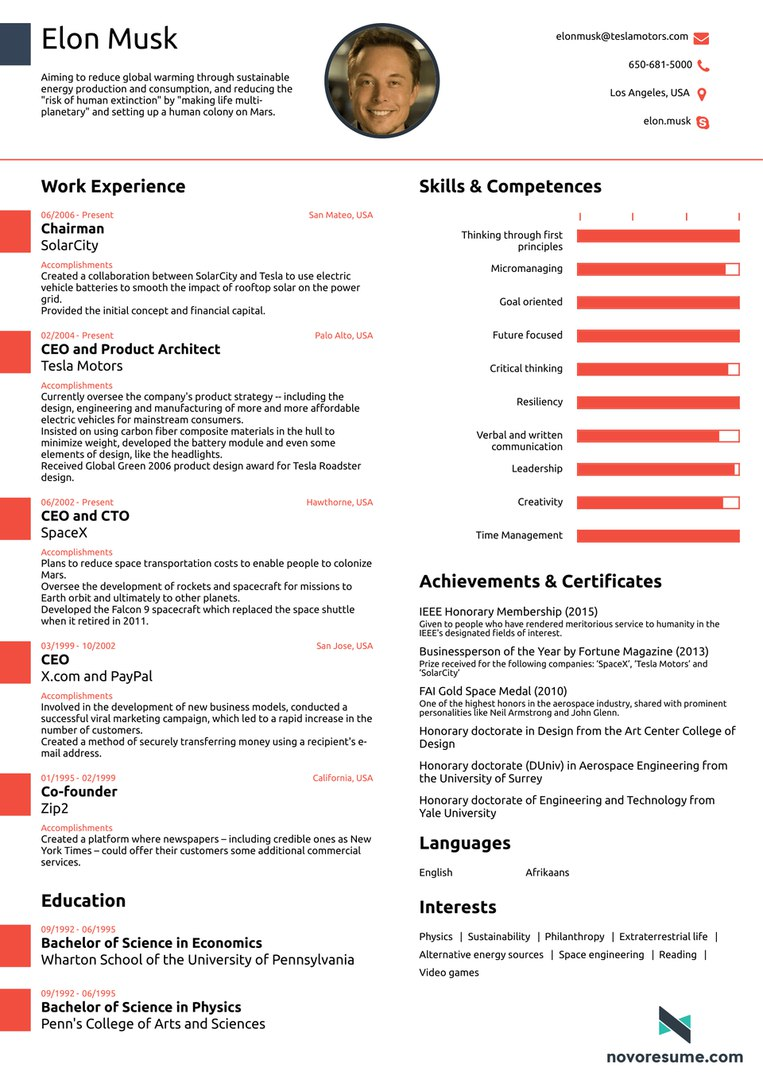
Apply to a foreign university with confidence
- Properly fulfilled documents
- Perfect motivation letter
- Support from a personal mentor
- Offers from several universities
How to stand out of the pack with a resume? Using the best samples and well-designed structure to make your resume catching for the employer
Free consultation
For each corporate position, the HR department on average receives 250 resumes, and only four to six candidates receive an invitation to an interview[1]. How do they convince the employer that they are worthy of the position? These people have a well-written resume.
It is important to remember that there is no magical fits-all resume: it is always individual and must take into account the needs of the employer and the context of the situation. The human factor also plays an important role. One employer can literally burst out with laughter when he sees some points in your resume, while for another they can serve as a reason to invite you for an interview. However, there are well-established tips and tricks that will help to bring your resume closer to the ideal and convince the employer that you are the best candidate.
| Language | Type | Position | Link |
|---|---|---|---|
| English | Detailed | Business Developer | Download |
| English | Convenient | IT Project Manager | Download |
| English | Effective | Store Manager | Download |
The fastest and most convenient way to create a resume is to use special services that make it easy to structure information and choose the design for the resume.
| Website | Language | Comment |
|---|---|---|
| Visme | English | Resume with the possibility of creating infographics |
| Europass | English | Popular service for creating resumes in English for study, work or internship in Europe |
| Zerply | English | A social network for animators, designers, composers and other representatives of creative professions, where you can create an online resume and upload work samples |
The resume begins with a presentation: you need to put a name in the heading, indicate contacts below. This is followed by the first part of the resume — the desired position and a summary of qualifications (1-3 sentences). This part should answer the following: what position the candidate applies for, and why he or she is suitable for it. "A summary statement essentially consists of a few pithy and strong statements at the beginning of your resume that help summarize your skills and experience in order for a prospective employer to quickly get a sense of the value you could offer," says Lily Zhang, a career development specialist at the Massachusetts Institute of Technology[2].
An example of a qualification review: "A school psychologist with more than 10 years of experience. Helped more than 100 children who encountered bullying at school. The author of two monographs, a successful popularizer who has achieved comprehensive coverage of this problem over the past couple of years." Such a review not only encourages reading the resume until the end, but also creates a story, based on which the employer interprets the rest of the resume.
In the review itself or after it, you can add key highlights. Amanda Augustin, a career consultant at TopResume, recommends allocating the first third of the resume page to the candidate’s profile[3]. To attract the reader’s attention to specific details and make reading more convenient, you can emphasize a couple of important points using bold text and paragraph breaks.
Qualities and skills of the candidate are divided into hard and soft skills.
Hard skills are professional skills, such as SEO, SMM, simultaneous interpretation, coding, and other skills that require experience and practice.
Soft skills are skills related to social interaction and personal qualities: self-discipline, stress tolerance, emotional intelligence, motivation, flexibility, confidence, teamwork, and other social and managerial skills. The list of personal qualities is not a mandatory part of the resume, however, 77% of employers believe that the presence of soft skills in the resume is no less important than indicating professional skills[4]. In practice, a squabbling and toxic person with undeveloped social skills undermines the morale of the entire team, as a result of which productivity decreases, and the company may lose valuable personnel.
In a resume, professional qualities should be put at the beginning — this will increase the success of a resume with 37% of employers[5]. When describing skills, you need to remember two rules:
Whether to insert a photo in the resume is a difficult question. According to the portal SuperJob, 4% of recruiters do not open resumes without a photograph, and 71% of employers claim that a successful photograph significantly helps in finding jobs[6]. At the same time, some experts abroad believe that including a photo in a resume is "naive and unprofessional," because a photo reveals gender, race, religion, and other signs by which an employer may discriminate against a candidate[7]. It is important to consider the cultural context of the country to which the candidate submits the resume.
If a candidate decides to attach a photograph, it must meet several criteria:
Workplaces should be described, starting with the last, while the not relevant experience of the grave past can be omitted — the description of experience should tell a story about a candidate of his professional ascent in the selected area. After writing the name of the company and the period of work, you must specify a list of your real responsibilities and achievements. You can specify the number of subordinates you had if there were any. The reasons for leaving a previous place of work do not need to be in your CV. According to Amanda Augustine of TopResume, huge blocks of text and lots of paragraphs, which in large numbers are perceived as a wall of text, should also be avoided[9]. Work experience can be described as follows:
You can create an excellent resume even if you have no work experience. The section can include:
The description of your education should not take up much space. The purpose of this section is to show the presence of a degree in a certain specialty. You should start from the last place of study. The record of education that was received many years ago, has not been used in a long time and is irrelevant for the position, can be omitted without regret. If the candidate has recently received a new education, this section must be placed before the section on work experience. Record of education is as follows:
The education section is an important part of a resume for a young person with no work experience. A recent graduate or a student should put a section on education at the top of the resume. You can mention:
If a graduate has work experience, then this section on education can be reduced. If a student has not graduated yet, the date of the upcoming graduation must be stated.
Knowing at least one foreign language increases the chance of getting a job by 34%[5]. To indicate the level of proficiency in a foreign language, the Common European Framework of Reference (CEFR) A1 – C2 should be used. In the CV, it is necessary to mention the presence of a language certificate. The proficiency level of at least B2 will be an authoritative confirmation of the candidate's skills. If there is no certificate, then you can evaluate the proficiency level yourself.
Languages that you learned in high school for a couple of years should not be indicated — it is important to understand that employers are interested in skills that the candidate really has and can apply at work. In extreme cases, you can specify the actual level of proficiency, for example, A1 – A2.
Knowing multiple languages, especially if the candidate wants to work in the international market, will make a CV more valuable. "Many students are still under the impression that English is the international language of business, but learning a range of languages fluently will make the difference between an average candidate and an excellent one", said Bertrand de Lalo, vice president of human resources at the company L'Oréal[10].
If Mozart wrote in his resume: "Composed more than 40 symphonies and about 600 other musical works", an employer who had never heard of Mozart would conclude that such a resume is terrible, and would throw it directly into the bin. If you work on creative projects it is necessary not only to tell about it, but also to show it — for this you need a portfolio. A portfolio is a collection of samples of your work with the help of which an employer can judge your competence. A portfolio is a requirement for animators, designers, photographers, cameramen, journalists, composers, voice actors, and many others. Often a candidate does not need an impressive resume — just examples of works that reveal their true skills and abilities.
The best option for a portfolio is a personal website with your works. Some examples for inspiration:
| Mohit Gupta | Designer-developer |
| Khalil Cade | Designer, Google |
| Maria Ho | Designer, Apple |
| Ramon Kailani | Musician |
| Lam Thuy Vo | Multimedia journalist, Wall Street Journal |
Depending on the profession, the requirements for the portfolio may vary, but it must always be clear, easy to navigate, and adapted for the needs of the employer. A few portfolio mistakes will leave no chance for even the best professional:
Due to some mistakes, even the best resume will go to the bin. Laszlo Bock, a former HR specialist at Google, explains: "The toughest part is that for 15 years, I've continued to see the same mistakes made again and again by candidates, any one of which can eliminate them from consideration for a job. What's most depressing is that I can tell from the resumes that many of these are good, even great, people. But in a fiercely competitive labor market, hiring managers don't need to compromise on quality. All it takes is one small mistake and a manager will reject an otherwise interesting candidate." Here are the main mistakes in the opinion of Bock and one of the largest US employment portals Careerbuilder[11]:
"Typos are deadly because employers interpret them as a lack of detail-orientation, as a failure to care about quality," commented Laszlo Bok[12]. This is even more important for those who work with text: journalists, copywriters, translators. In order not to get into trouble, you need:
Dave Tofanelli, the author of Communication in the Organization, and a professional who ran the largest US insurance companies for more than 30 years says: "Email accounts are free. There is no reason not to sign up for your own. Yet many mid-career professionals share an email with a significant other or the entire family, generating addresses such as dickandjane@domain.com or thesmiths@domain.com. Also, stay away from cutesy addresses. Instead, adopt an address that incorporates the name you use professionally on your resume and cover letter." [13]
| Bad address | Good address |
|---|---|
|
|
An employer will not be able to assess the potential of the candidate if, instead of useful information, the CV consists of filler. The lack of concrete information only indicates that in reality, the applicant has no real achievements. Michael Lopp, who recruited for several companies, including Apple and Symantec, writes: "This intern says he “planned, designed, and coordinated engineers’ efforts for the development of a mission critical system." Zzzzzzzzzzzzz. What did this guy actually do?”[14] Statistics confirm the importance of measurable results: the use of numbers in a resume increases its success by 40%[8].
Laszlo Bock suggests describing your achievements at work according to the following formula:
"Completed task X, which is measured in Y achieved by actions Z".
A. Lebedev, Art Director of Lebedev Studio: "We employ a person, not a profession. A standard resume — a sign of a professional — will be ignored. We are used to receiving letters written especially for us, and not sent to forty addresses at once"[16].
The resume should be addressed to the specific employer. A bog-standard resume is immediately visible, and it shows a lack of interest and respect for the employer. Meanwhile, more than half of the applicants make this mistake[17]. To stand out you need to:

An employer will not waste time searching for the main idea in a huge paragraph of text or in an endless list of items. You should only write about what is relevant, use the most concise language, highlight only the main achievements, and format the text to highlight the main points.

Compliance with the volume requirements is one of the most difficult tasks when writing a resume. Especially for candidates with extensive experience in training and work — how are you supposed to fit all of your rich professional experience in there? It turns out that you can: several years ago, one web service created a resume for Elon Musk, and it fits on one page[3].
Some employers ask for a cover letter to be attached to the resume, and some do not leave any recommendations in this regard. As a result, 45% of applicants do not send cover letters[19]. Nevertheless, according to statistics, a cover letter increases the candidate's chances by more than a third[5]. This is because the cover letter is an additional opportunity to attract the attention of the employer and tell about yourself and your attitude to this company.
A cover letter is a short text that explains to the employer why this candidate is perfect for the company, as well as convinces the employer to read the CV. The cover letter, unlike the resume, is personal and gives the candidate a chance to prove himself through the text: highlight what he considers important, explain his interest in working in this company, talk about his professional ambitions, show the ability to logically express thoughts and engage in business conversation. Even if there is no request for a letter, it is better to write it as it will help to make a good first impression and distinguish the applicant from the others. It should be remembered: the cover letter should be an addiction to your CV and not go over what has already been said in it.
The classic structure for writing a cover letter includes:
Your writing should be official and use polite terms. At the end of the letter, you can thank the employer for the time.
The cover letter should be concise (from a few sentences to 4-5 short paragraphs), written for a specific employer, contain measurable facts about the applicant, and not include unnecessary information. "I’ve seen incredibly short cover letters with just an awkward photo attached to them for no reason at all, staring at me silently. Others were written in a surprisingly terrible English which is why they sometimes revealed quite dark and inappropriate things (“I will work you"). And some would overshare about why they left their previous jobs or about how incredibly awesome they already are at what they want to do”, comments Lori Kahn, founder, and CEO of Media Staffing Network[20].
To deceive a potential employer is not only unethical but also stupid: the lack of the necessary knowledge and qualifications is easy to detect at an interview or after a test task. Michael Erwin, Senior Career Advisor of CareerBuilder says: "It's human nature to be tempted to exaggerate a little on your resume and suggest that you have more skills or greater experience than you really do. However, the short term gains you might make in landing the job through deception can have long term consequences that may do serious damage to your career."[11]. According to statistics, 75% of employers caught job seekers lying in a resume. Here are examples of frauds revealed:
"In a very rough audit, we found that at least 5-10% of resumes reveal confidential information. Which tells me, as an employer, that I should never hire those candidates ... unless I want my own trade secrets emailed to my competitors", says Laszlo Bok[12].
When a candidate discloses confidential information, he violates not only business ethics but also the law. What is and what is not confidential information is usually spelled out in an employment contract or in a non-disclosure agreement (NDA). If there are items that prohibit the sharing any information about the business, then this information should not be placed in the section with the results of the work. This also means that it is prohibited to "hint" at it. Imagine that a candidate who is forbidden to disclose the names of client companies writes in his resume: “Consulted to a major software company in Redmond, Washington.” Does he violate the confidentiality of his former employer? Of course, it is obvious that we are talking about Microsoft. If your former employer tracks the leak of sensitive information to you, everything will most likely end in the court.
There is no limit to perfection — the resume can be improved in several more ways:
If you don’t live in an English speaking country, sometimes you still might need to write a resume in English — for example, for work or internships in a foreign company. All of the above recommendations will work in this case. In CV in English, special attention should be paid to the competent use of a foreign language: mistakes will be rejected by the employer, even if this is not the native language of the candidate. There are several ways to write an English text without making mistakes:
60+ countries
we work with
$1,000,000 saved
by students through scholarships
6,400 offers
our students got